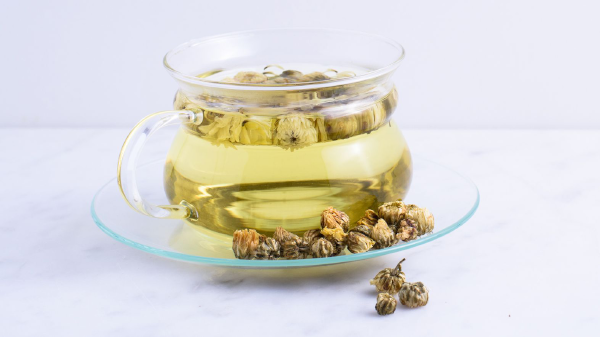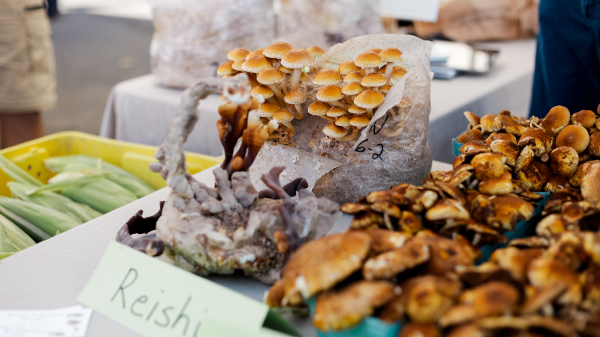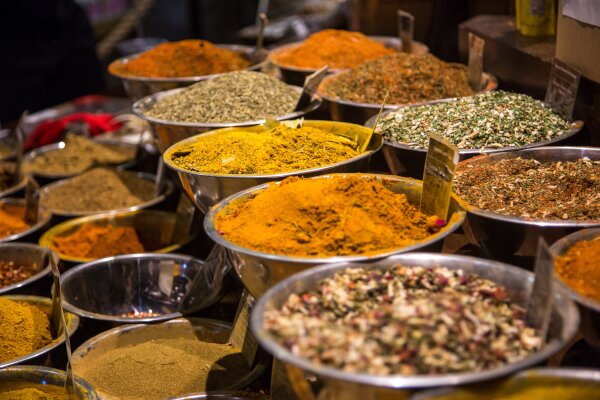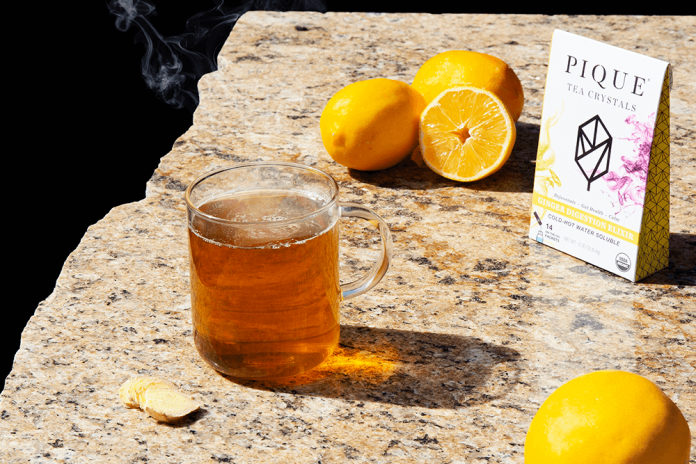Chinese Herbalism is a sophisticated practice that honors the wisdom of the Earth and our bodies. This elegant practice is comprised of thousands of years of knowledge and wisdom from Chinese Herbalism texts including The Huang Di Nei Jing, Shen Nong Ben Cao Jing, and many others.
The Chinese Pharmacopeia is quite extensive, including hundreds of herbs which all have unique therapeutic properties and are categorized according to function. In Chinese Herbal therapy, specific herbs are combined into formulas to help with particular TCM diagnostic patterns. Herbs can also be used individually for their therapeutic benefits to promote optimal health!
What are herbs?
Herbs in Chinese herbalism include all different parts of plants and the Earth including roots, stems, branches, leaves, flowers, seeds, fruits, shells, minerals, and sometimes some animal products!
What are herbs used for?
The therapeutic actions of Chinese Herbs are wide-ranging and have vast applicability.
Herbs may be used to nourish the body to support immunity, gastrointestinal, respiratory, and reproductive health, as well as restful night’s sleep.
They can help to move stagnation that may present as discomfort, as well as aid in the body’s natural detoxification processes.
A few examples of specific herbs to enhance the body’s defense system and promote overall health include Chrysanthemum flower, Honeysuckle flower, Lalang Grass and Reishi mushroom.
What is Chrysanthemum Flower used for?
Chrysanthemum flower (Chrysanthemi Flos) is known in pin yin as Ju Hua.
It is slightly cold in essence, has a bitter and sweet flavor, and is aromatic and light. Its therapeutic actions are associated with the Liver and Lung organ and meridian systems.
According to Chinese Medicine, Chrysanthemum flower’s cool nature helps to release heat from the defensive/protective layer of the body.
Research shows that Chrysanthemum contains many vitamins and minerals that may support immune health, including Vitamin C, Vitamin B, and minerals such as magnesium, potassium, and Calcium. [1] Additionally, it is rich in beta- carotene, a nutrient that supports eye health. [1]
Studies have also shown the Chrysanthemum flower to help support the body’s natural anti-inflammatory response. Also, the essential oil derived from Chrysanthemum flower has also been studied to have antibacterial properties. [2] [3]

What is Honeysuckle used for?
Honeysuckle flower (Lonicera Flos), referred to as Jin Yin Hua in Chinese Medicine, is another herb that has a supportive effect on the immune system.
In Chinese Herbalism, Honeysuckle is characterized as cold natured and sweet in flavor. This herb acts as a guide to the Lung, Heart, and Stomach meridians and organ systems.
Honeysuckle is considered an herb that helps to ‘Clear Heat and Resolve Toxicity’. In this context, ‘heat toxin’ refers to fevers, sore throat, swellings, and other related symptoms. Honeysuckle flower in Traditional Chinese Medicine is often used in combination with other herbs to address infections of the respiratory and gastrointestinal system.
Modern research has found Honeysuckle to have a myriad of health-supporting properties, ranging from antioxidant content to supporting the body’s anti-inflammatory response and beyond. [4] [5]
What is Lalang Grass used for?
Lalang grass (Rhizoma Imperialte) is known as Bai Mao Gen in pin yin and is also referred to as Wooly grass or White grass.
According to Chinese Herbalism, it manifests its therapeutic support on the Lung, Stomach, Small Intestine, and Bladder meridian and organ systems. Lalang grass has the action of helping to clear heat and promote urination, clearing heat from the Lungs and Stomach energetic and organ systems, and cooling the blood.
Emerging research shows that Lalang grass may also help support the body’s anti-inflammatory response and support neurological health. [7] [8]
What is Reishi Mushroom used for?
Reishi mushroom (Ganoderma), also known as Ling Zhi in pin yin and the ‘Mushroom of Immortality’, has received a lot of attention for its therapeutic effects for good reason!
Reishi in Chinese herbalism is sweet and neutral and directs its actions to the Lung, Liver, and Heart meridians and organ systems. In TCM it has a nourishing effect, supporting the Qi, or energy of the body, particularly of the Lungs. It also supports nourishment of the blood and is believed to have a calming effect on the spirit.
Today, Reishi is widely used and appreciated for its adaptogen properties which help the body deal with stress. Promising studies show that Reishi may also help support the immune system. [9] Emergent research also shows that Reishi may have antioxidant properties and beyond.

Final Thoughts
Chinese herbalism offers a holistic approach that works with the body to promote optimal health. Adding herbs to your daily routine is a great way to show your body and mind some love and care.
If you are interested in receiving regular herbal care, it is important to work with a specialist who can safely and effectively address your concerns. If you are experiencing shortness of breath, fever, and other infectious disease symptoms it is important to connect with your primary care physician. Herbs are potent medicine and have many healing benefits, but they also may interact with certain medications. As always, discuss any dietary and supplement changes with your health care provider.
[1] Crysanthemum, garland, raw. (2020). Retrieved 2019, from https://fdc.nal.usda.gov/fdc-app.html#/food-details/169995/nutrients
[2] Luyen, B. T., Tai, B. H., Thao, N. P., Cha, J. Y., Lee, H. Y., Lee, Y. M., & Kim, Y. H. (2015). Anti-inflammatory components of Chrysanthemum indicum flowers. Bioorganic & medicinal chemistry letters, 25(2), 266–269. https://doi.org/10.1016/j.bmcl.2014.11.054
[3] Shunying, Z., Yang, Y., Huaidong, Y., Yue, Y., & Guolin, Z. (2005). Chemical composition and antimicrobial activity of the essential oils of Chrysanthemum indicum. Journal of ethnopharmacology, 96(1-2), 151–158. https://doi.org/10.1016/j.jep.2004.08.031
[4] Guo, Y., Lin, L. & Wang, Y. Chemistry and pharmacology of the herb pair Flos Lonicerae japonicae-Forsythiae fructus . Chin Med 10, 16 (2015). https://doi.org/10.1186/s13020-015-0044-y
[5] Li, Y., Cai, W., Weng, X., Li, Q., Wang, Y., Chen, Y., Zhang, W., Yang, Q., Guo, Y., Zhu, X., & Wang, H. (2015). Lonicerae Japonicae Flos and Lonicerae Flos: A Systematic Pharmacology Review. Evidence-based complementary and alternative medicine : eCAM, 2015, 905063. https://doi.org/10.1155/2015/905063
[6] Yue, X.-R & Hou, Z.-X & Liu, P. & Wang, S.-S. (2006). Anti-inflammatory effect of imperata cylindrica. Chinese Journal of Clinical Rehabilitation. 10. 85-87.
[7] Yoon, J. S., Lee, M. K., Sung, S. H., & Kim, Y. C. (2006). Neuroprotective 2-(2-phenylethyl)chromones of Imperata cylindrica. Journal of natural products, 69(2), 290–291. https://doi.org/10.1021/np0503808
[8] Parkavi, V., Vignesh, M., Selvakumar, K., Muthu Mohamed, J., & Joysa Ruby, J. (2012). Antibacterial Activity of Aerial Parts of Imperata cylindrica (L) Beauv. Retrieved 2020, from http://oaji.net/articles/2014/364-1401996184.pdf
[9] Gao, Y., Zhou, S., Jiang, W., Huang, M., & Dai, X. (2003). Effects of ganopoly (a Ganoderma lucidum polysaccharide extract) on the immune functions in advanced-stage cancer patients. Immunological investigations, 32(3), 201–215. https://doi.org/10.1081/imm-120022979
[10] Liu J, Yang F, Ye L. B, Yang X. J, Timani K. A, Zheng Y, Wang Y. H. Possible mode of action of antiherpetic activities of a proteoglycan isolated from the mycelia of Ganoderma lucidum in vitro. J Ethnopharmacol. 2004;95:265–72
[11] Lee J. M, Kwon H, Jeong H, editors. et al. Inhibition of lipid peroxidation and oxidative DNA damage by Ganoderma lucidum. Phytother Res. 2001;15:245–9






